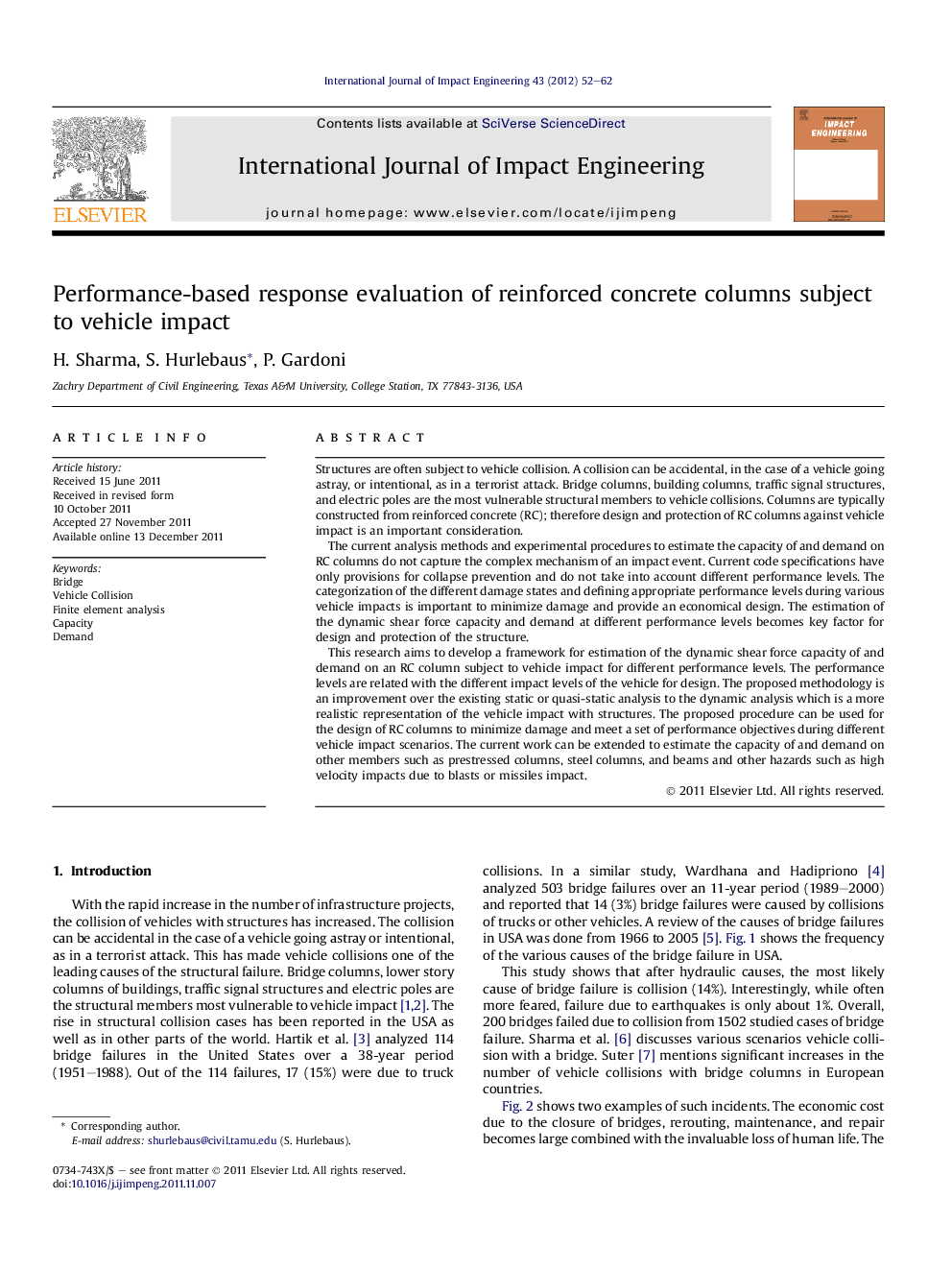| Article ID | Journal | Published Year | Pages | File Type |
|---|---|---|---|---|
| 778467 | International Journal of Impact Engineering | 2012 | 11 Pages |
Structures are often subject to vehicle collision. A collision can be accidental, in the case of a vehicle going astray, or intentional, as in a terrorist attack. Bridge columns, building columns, traffic signal structures, and electric poles are the most vulnerable structural members to vehicle collisions. Columns are typically constructed from reinforced concrete (RC); therefore design and protection of RC columns against vehicle impact is an important consideration.The current analysis methods and experimental procedures to estimate the capacity of and demand on RC columns do not capture the complex mechanism of an impact event. Current code specifications have only provisions for collapse prevention and do not take into account different performance levels. The categorization of the different damage states and defining appropriate performance levels during various vehicle impacts is important to minimize damage and provide an economical design. The estimation of the dynamic shear force capacity and demand at different performance levels becomes key factor for design and protection of the structure.This research aims to develop a framework for estimation of the dynamic shear force capacity of and demand on an RC column subject to vehicle impact for different performance levels. The performance levels are related with the different impact levels of the vehicle for design. The proposed methodology is an improvement over the existing static or quasi-static analysis to the dynamic analysis which is a more realistic representation of the vehicle impact with structures. The proposed procedure can be used for the design of RC columns to minimize damage and meet a set of performance objectives during different vehicle impact scenarios. The current work can be extended to estimate the capacity of and demand on other members such as prestressed columns, steel columns, and beams and other hazards such as high velocity impacts due to blasts or missiles impact.
► A framework for the estimation of response of RC columns under vehicle impact is developed. ► A procedure to estimate the dynamic shear force capacity of RC columns is proposed. ► A procedure to estimate the dynamic shear demand on RC columns is presented. ► A performance-based approach is presented as opposed to only collapse prevention.
